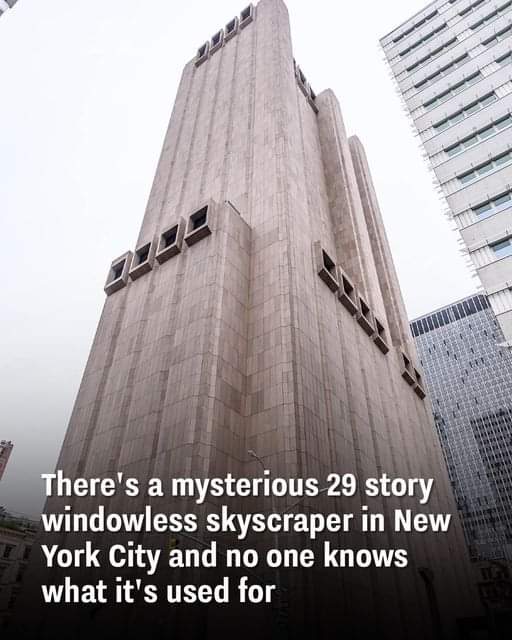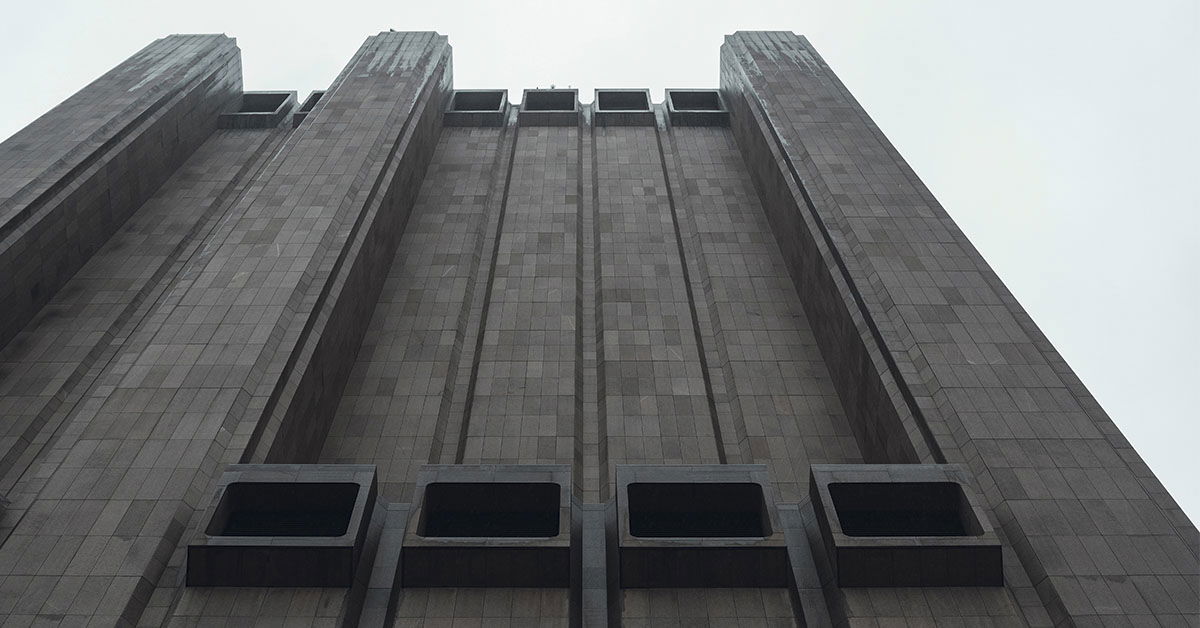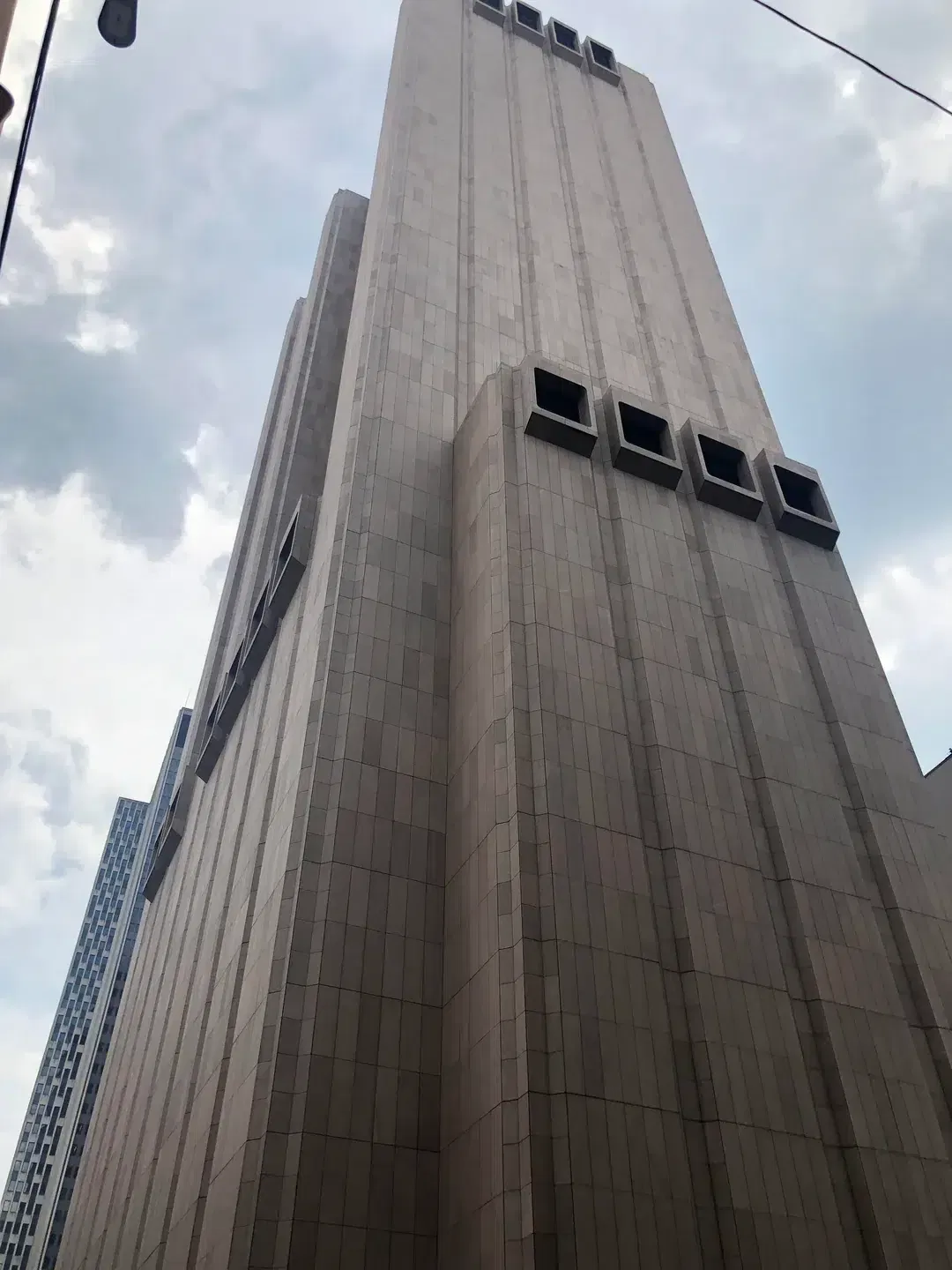
The structure, built in 1974, was engineered to resist atomic bombs and was originally intended to contain critical telecommunications equipment. The architectural company John Carl Warnecke & Associates designed it as a communication nerve center that was reinforced against nuclear threats.
This towering construction, a gray tower of concrete and granite climbing 550 feet into the New York skyline, still stands, unlike any other building in its area. Unlike the nearby residential and office buildings, it lacks a single window and is completely dark. At night, it has an ominous presence, and by day, it throws a massive shadow, its square vents emitting a subtle hum that is frequently drowned out by the city’s busy noise.
For decades, 33 Thomas Street, better known as the “Long Lines Building,” has caught the imaginations of New Yorkers as one of the city’s strangest and most iconic skyscrapers. However, the exact purpose of this mysterious edifice has remained mostly unknown, shrouded in secret.
The Secret Behind 33 Thomas Street.

Beyond its intriguing façade, 33 Thomas Street hides a deeper truth. This facility appears to be more than just a telecommunications center. According to documents provided by NSA whistleblower Edward Snowden, as well as architectural blueprints and interviews with former AT&T employees, 33 Thomas Street served as an NSA surveillance facility codenamed Titanpointe.
The NSA’s participation extends beyond simple speculation. A significant international gateway switch is located inside the building, routing phone calls between the United States and other countries across the world. The NSA is alleged to have intercepted these calls from a secure facility within the AT&T building. This clandestine surveillance program has targeted not only international organizations such as the United Nations, the International Monetary Fund, and the World Bank, but also other countries, including US allies.
AT&T, Privacy, and Legal Oversight
While AT&T has collaborated with the NSA on eavesdropping, little is known about the particular function of facilities such as 33 Thomas Street in carrying out top-secret activities. However, the Snowden documents reveal new insight into how NSA equipment was installed into AT&T’s New York City network. This integration discloses the methods and technologies used by the agency to collect communication data from the company’s systems.
The NSA’s presence in this landmark tower raises concerns about the limits of modern surveillance. As Elizabeth Goitein, co-director of the Brennan Center for Justice’s liberty and national security program, observes, “This is yet more proof that our communications service providers have become, whether willingly or unwillingly, an arm of the surveillance state.” The NSA’s substantial integration into domestic communications infrastructure calls into question the claim that such surveillance is limited to non-American targets.

In August 2015, the New York Times and ProPublica reported that AT&T has a long history of working with the NSA and had been praised by the agency for its “extreme willingness to help.” However, neither Mr. Snowden’s papers nor the latest reports provide conclusive evidence that the NSA used AT&T space or equipment. While AT&T Inc. owns the land at 33 Thomas, it only occupies around 87 percent of the floor space; the remainder is held by Verizon.
The NSA’s role in spying at 33 Thomas Street poses serious legal and ethical issues. The structure might serve as a monument to both the delicate balance of privacy and security in our linked society, as well as the difficulties of establishing proper oversight in an age of advanced technology and government surveillance.

To summarize, 33 Thomas Street remains an iconic and fascinating tower in New York City, containing both the history of telecommunications and the mysteries of modern monitoring. The actual extent of its cooperation in government eavesdropping may never be known, but it represents the delicate balance between privacy and security in today’s interconnected world.















